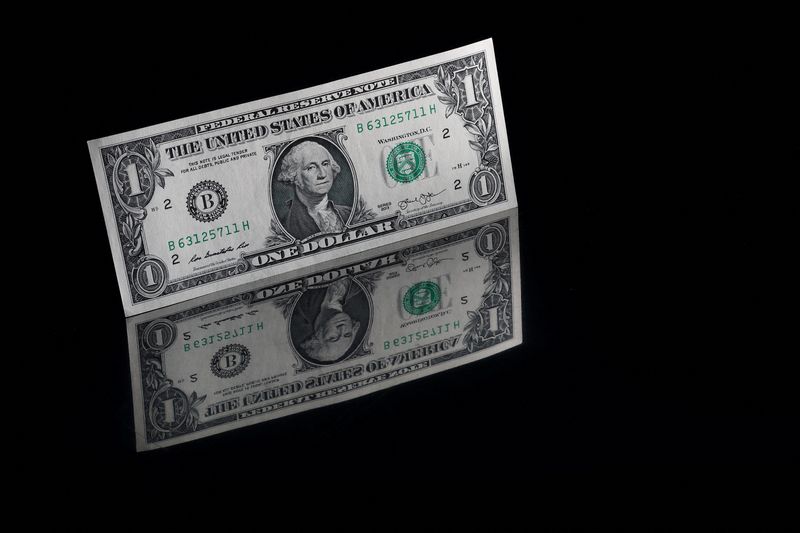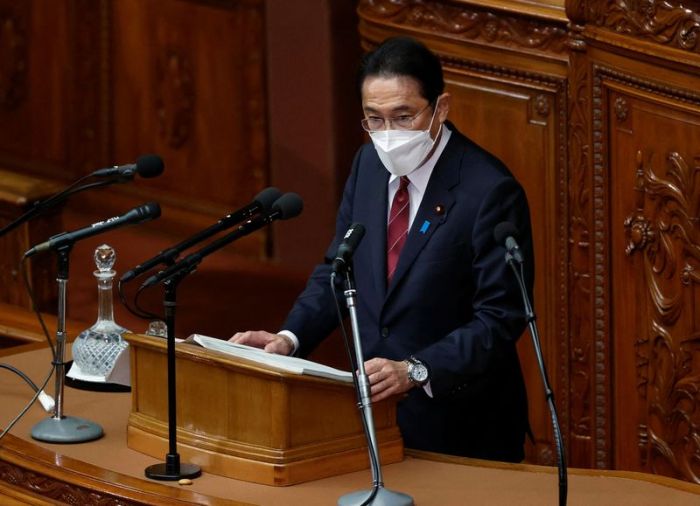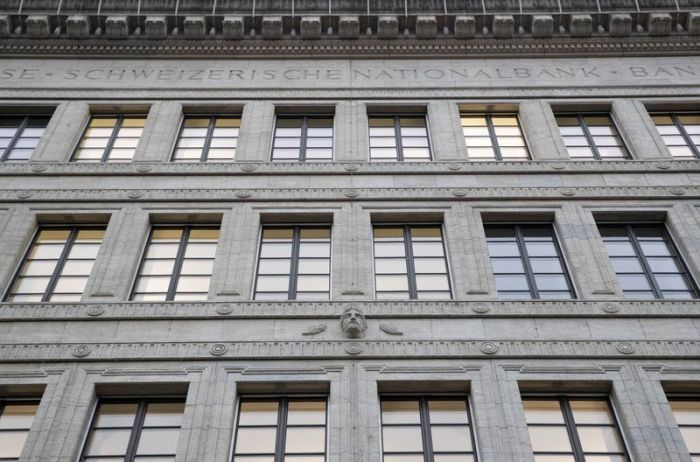NEW YORK (Reuters) – The U.S. dollar dipped slightly on Tuesday as improving risk sentiment boosted riskier currencies such as the Australian dollar and the British pound.
The U.S. Dollar Currency Index was last at 96.47, down 0.03% on the day, after slipping as low as 96.336 earlier in the session. The index, which is up about 7% for the year, fell 0.1% on Monday as traders sold the greenback to book profits in the final days of the year.
Risk appetite took a blow on Monday after U.S. Senator Joe Manchin, a conservative Democrat who is key to President Joe Biden’s hopes of passing a $1.75-trillion domestic investment bill – known as Build Back Better – said on Sunday he would not support the package, prompting a sell-off in global markets.
Surging Omicron coronavirus cases also pushed investors to look for safe havens such as the Japanese yen and the Swiss franc < CHF=>.
Stocks rebounded and bond yields rose on Tuesday as investors looked past the recent setbacks.
“We expect broader range trading will extend over the holiday period,” Shaun Osborne, chief FX strategist at Scotiabank, said in a note.
The risk-sensitive Australian dollar bounced on Tuesday, snapping a two-day weakening streak to trade up 0.60%.
The rebound in global risk appetite also pushed the British pound up against the dollar and euro, even as British Prime Minister Boris Johnson cautioned that further lockdown measures may be needed to tackle the spread of the virus.
Despite the greenback’s lackluster showing this week, the dollar index is still close to the 16-month high of 96.938 hit in late November. Investors remain bullish on the outlook for the greenback, with latest positioning data near the highest levels in more than two years.
The Federal Reserve’s hawkish statement last week that it would accelerate the unwind of its asset purchases, paving the way for three quarter-percentage-point rate increases in 2022 – is expected to keep the dollar well-supported.
“We continue to anticipate the USD and CAD advancing against the majors in the new year as investors bank on tighter monetary policy being introduced by the Fed and Bank of Canada respectively,” Osborne said.
The slack in Canada’s economy caused by the coronavirus pandemic has substantially diminished, the governor of the Bank of Canada said on Wednesday, a key sign the central bank is set to begin hiking rates soon.
The loonie was up about 0.2% on Tuesday.
In other trading, Turkey’s lira was up about 7% against the U.S. dollar, extending its historic recovery from record lows after President Tayyip Erdogan unveiled a plan he said would guarantee local currency deposits against market fluctuations.
Bitcoin gained 3.5% to $48,558 after trending lower for the past few weeks.
========================================================
Currency bid prices at 3:37PM (2037 GMT)
Description RIC Last U.S. Close Pct Change YTD Pct High Bid Low Bid
Previous Change
Session
Dollar index 96.4760 96.5170 -0.03% 7.218% +96.6420 +96.3360
Euro/Dollar $1.1280 $1.1274 +0.06% -7.67% +$1.1303 +$1.1261
Dollar/Yen 114.0950 113.6400 +0.49% +10.56% +114.2150 +113.6200
Euro/Yen 128.70 128.11 +0.46% +1.40% +128.7500 +128.0600
Dollar/Swiss 0.9236 0.9214 +0.27% +4.43% +0.9254 +0.9196
Sterling/Dollar $1.3266 $1.3210 +0.44% -2.89% +$1.3268 +$1.3196
Dollar/Canadian 1.2915 1.2944 -0.22% +1.43% +1.2945 +1.2912
Aussie/Dollar $0.7152 $0.7110 +0.60% -7.01% +$0.7156 +$0.7098
Euro/Swiss 1.0419 1.0387 +0.31% -3.59% +1.0427 +1.0388
Euro/Sterling 0.8502 0.8539 -0.43% -4.87% +0.8549 +0.8501
NZ $0.6767 $0.6716 +0.79% -5.74% +$0.6768 +$0.6704
Dollar/Dollar
Dollar/Norway 8.9380 9.0660 -1.35% +4.16% +9.0550 +8.9415
Euro/Norway 10.0858 10.2045 -1.16% -3.65% +10.2178 +10.0790
Dollar/Sweden 9.1272 9.1326 -0.14% +11.36% +9.1678 +9.1115
Euro/Sweden 10.2949 10.3094 -0.14% +2.17% +10.3334 +10.2926
(Reporting by Saqib Iqbal Ahmed; Editing by Dan Grebler and Nick Zieminski)





















